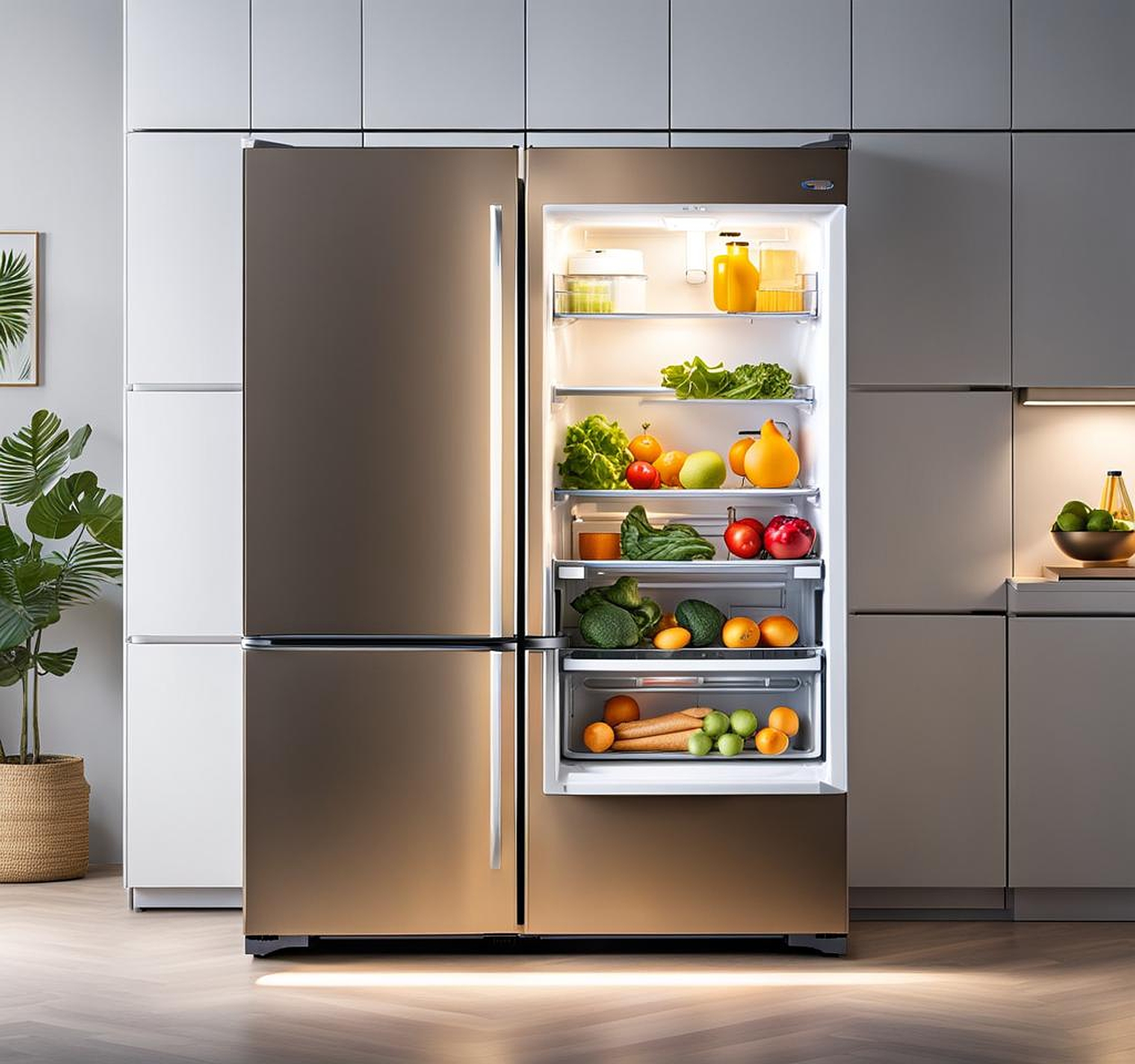Hey there! If your fridge isn’t making any noise but the light is still on, you might be feeling a bit confused and concerned. Don’t worry, I’ve got your back. This situation could indicate a potential issue with your refrigerator’s compressor or other components, and it’s crucial to address it promptly to prevent food spoilage and further damage.
Understanding the Fridge Not Humming but Light On Phenomenon
Let’s start by breaking down what’s going on. Your refrigerator relies on a compressor to circulate refrigerant and keep the interior cool. When this compressor is running, it typically produces a gentle humming sound. However, if the compressor fails or encounters a problem, it may stop operating while the light remains on due to a separate electrical circuit.
There could be various reasons behind this issue, ranging from a faulty start relay to a malfunctioning thermostat or control board. Sometimes, it could be as simple as a clogged condenser coil or a loose electrical connection. Regardless of the cause, it’s essential to address the problem promptly to ensure your food stays fresh and your refrigerator continues to function efficiently.
Troubleshooting Steps for a Silent but Lit Refrigerator
Before diving into more complex repairs, let’s go through some basic troubleshooting steps. Start by checking if your refrigerator is plugged in properly and if the circuit breaker hasn’t tripped. These simple oversights can sometimes be the culprit behind the silence.

Next, take a look at the condenser coils, typically located at the back or bottom of your fridge. These coils dissipate heat from the refrigerant, and if they’re clogged with dust or debris, it can prevent the compressor from running correctly. Use a soft-bristle brush or vacuum attachment to gently clean the coils and remove any buildup.
If the coils seem clean, it’s time to inspect the start relay and compressor itself. The start relay is responsible for initiating the compressor’s operation, and if it’s faulty, the compressor won’t turn on. You may need to consult your refrigerator’s manual or seek professional assistance to test and potentially replace the start relay or compressor.
Checking the Thermostat and Control Board
The thermostat is another critical component that regulates the temperature inside your fridge and controls the compressor’s cycling. If the thermostat malfunctions, it could prevent the compressor from running even though the light stays on. Similarly, the control board manages the overall operation of your refrigerator, and a failure in this component can also cause issues with the compressor.
Testing and potentially replacing the thermostat or control board may require specialized tools and knowledge. At this point, you might consider seeking professional assistance from a qualified appliance repair technician to avoid further complications or potential safety risks.
Fridge Components Potentially Responsible for the Issue
To better understand the potential causes behind your silent but lit refrigerator, let’s delve into the key components that could be responsible for the issue:
- Compressor: As mentioned earlier, the compressor is the heart of your refrigerator’s cooling system. It circulates the refrigerant through the coils, allowing heat absorption and dissipation. A failed compressor could be the root cause of your fridge’s silence.
- Start Relay: This component initiates the compressor’s operation by providing an initial jolt of electricity. A faulty start relay can prevent the compressor from turning on, resulting in a silent fridge.
- Thermostat: Acting as the temperature regulator, the thermostat monitors the interior temperature and signals the compressor to cycle on and off accordingly. A malfunctioning thermostat could disrupt this crucial process.
- Control Board: Often referred to as the “brain” of your refrigerator, the control board manages various functions, including the compressor’s operation. A failed control board can lead to a variety of issues, including a silent compressor.
- Evaporator Fan Motor: This motor is responsible for circulating cold air throughout the fridge’s interior. While not directly related to the compressor’s operation, a faulty evaporator fan motor could contribute to cooling issues and potentially cause the compressor to work harder or shut down prematurely.
Understanding the role of each component can help you narrow down the potential cause and guide your troubleshooting efforts or decisions regarding professional repair.
Now that you have a better understanding of the potential causes, it’s time to decide whether to tackle the repair yourself or seek professional assistance. This decision largely depends on your technical expertise, the complexity of the issue, and the cost considerations.
If you’re comfortable with basic appliance repairs and have the necessary tools, attempting a DIY fix could save you money. However, it’s crucial to exercise caution and follow safety protocols, especially when dealing with electrical components. Always refer to your refrigerator’s manual and consult reputable online resources for guidance.
On the other hand, enlisting the help of a professional appliance repair technician can provide peace of mind and ensure the job is done correctly. Professionals have the expertise, specialized tools, and experience to diagnose and repair complex issues efficiently. While their services may come at a higher cost, they can save you time and potential further expenses down the line.
Ultimately, the decision comes down to weighing the pros and cons of each approach. Consider factors such as the cost of repair versus replacement, the age and condition of your refrigerator, and your comfort level with DIY repairs. If the issue seems beyond your expertise or the repair costs are significant, it might be more practical to explore replacement options.